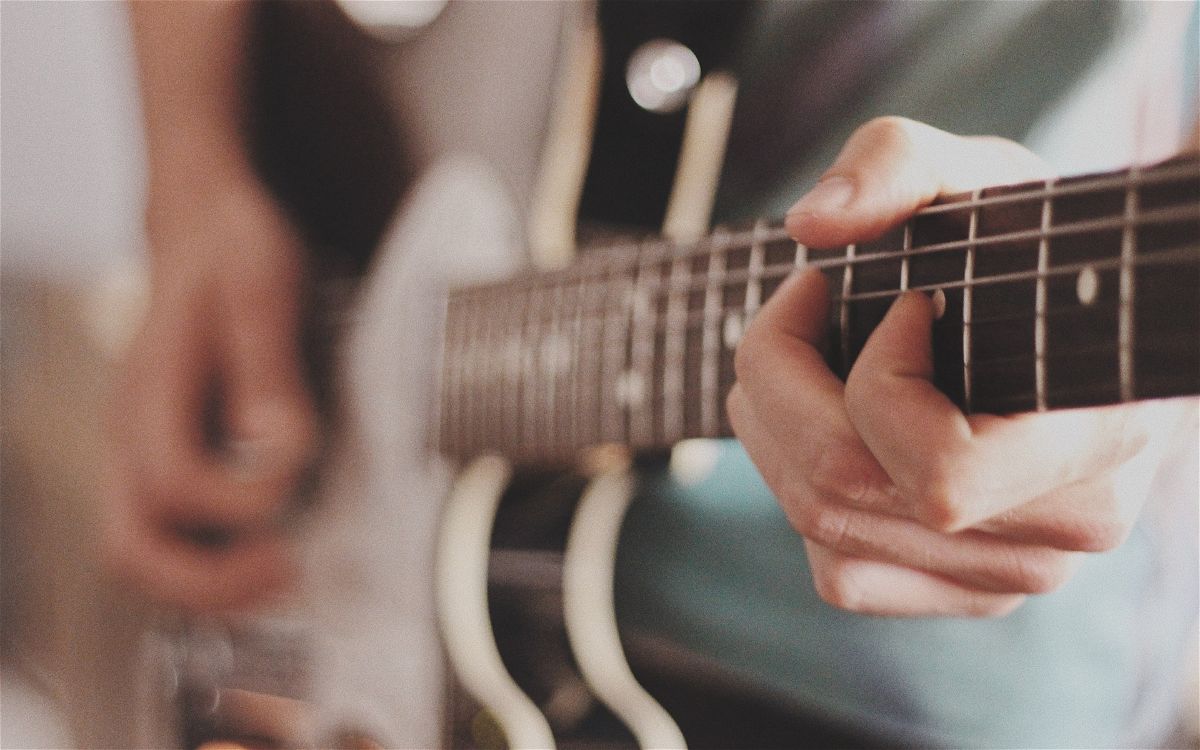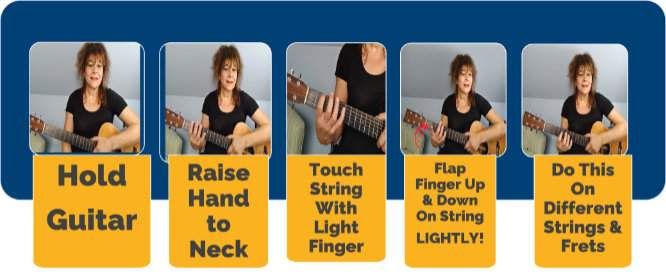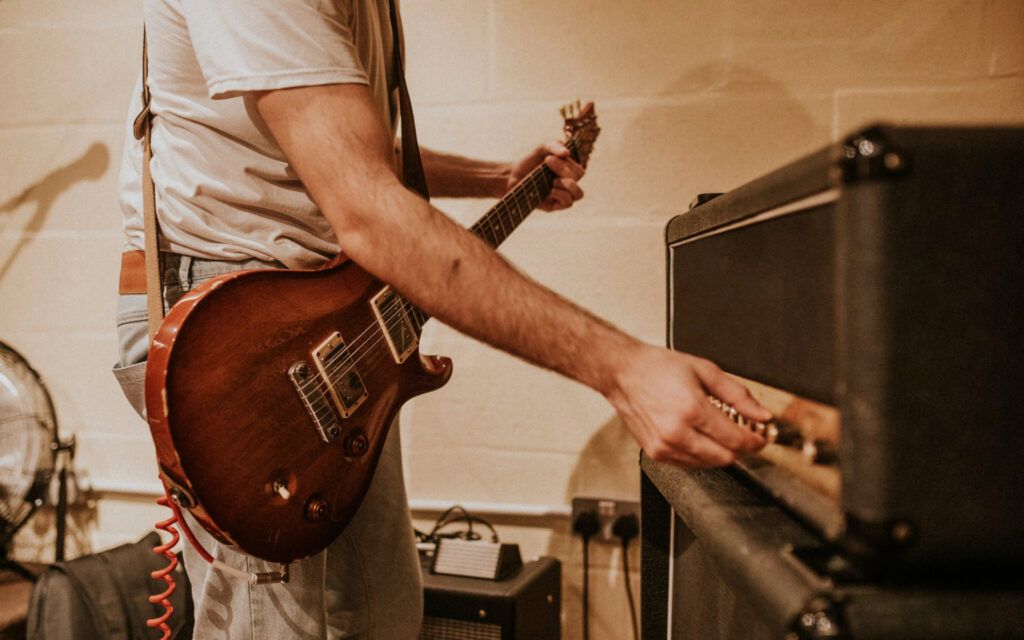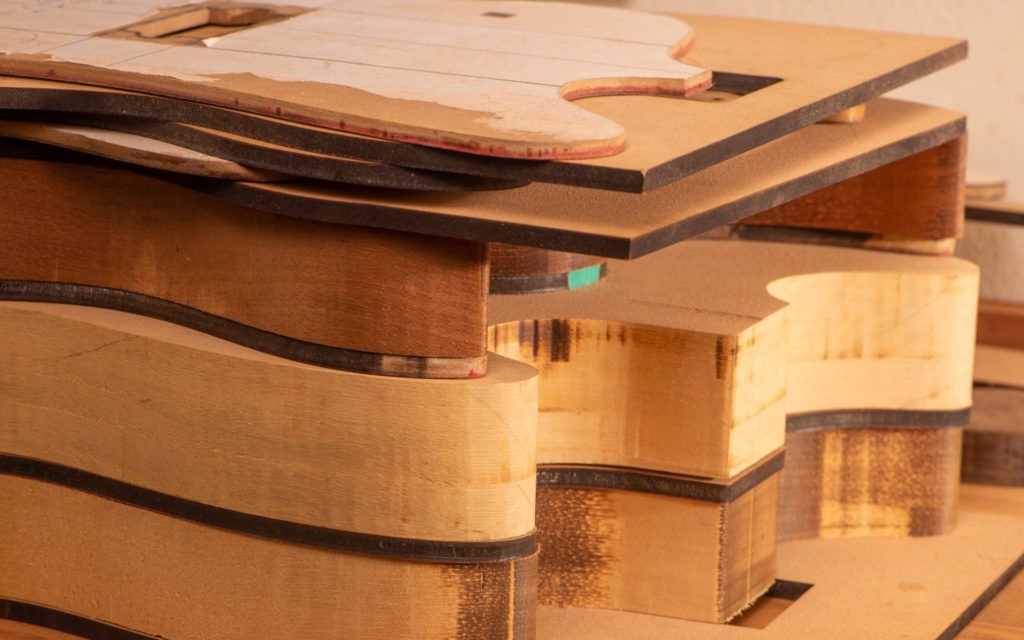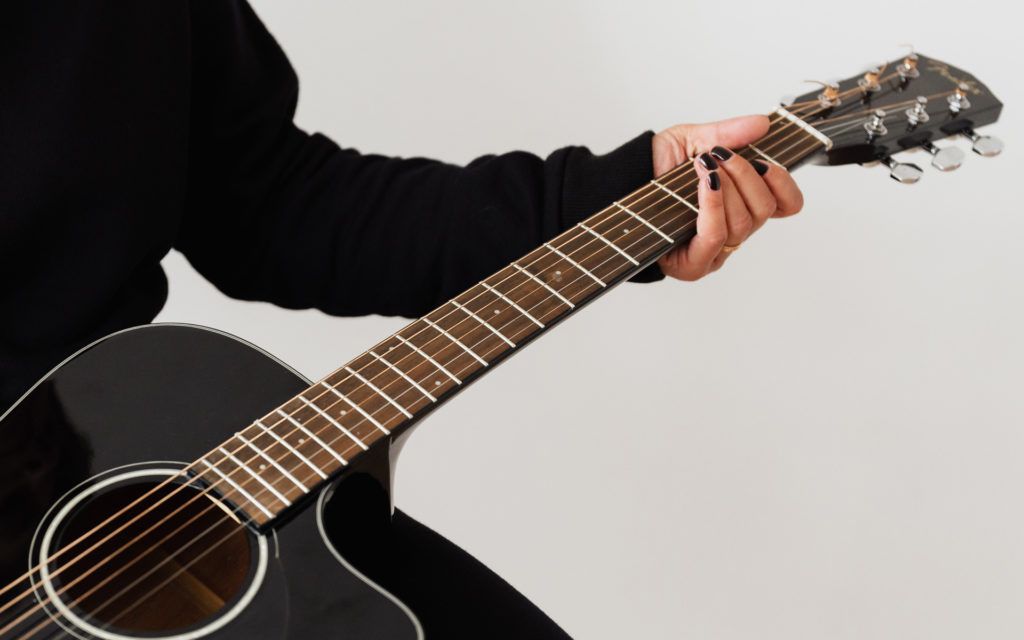What Kills Your Speed On Guitar?
Many guitar players have trouble building speed on guitar. Until they become aware of a few extremely important facts about guitar playing, they will continue to be unable to build speed and reach a professional level of ability.
These factors all have to do with excess muscle tension during playing. This muscle tension comes from these sources:
- unbalanced sitting with the guitar
- incorrect hand positions
- incorrect practice approaches
The first step out of this syndrome is to become aware of this tension. The following information and exercise will help you do that….
The “Incredible Lightness”
A good player feels entirely different when playing than a struggling player. A struggling player has a large amount of chronic muscle tension throughout the muscles of the body while playing that they do not feel. Until they do feel it, they cannot release it or train their muscles to make the required movements without that tension.
When we do learn or make our movements with minimum effort, there is a feeling of lightness in the fingers that is quite incredible to feel – which is why I call it the Incredible Lightness!
This feeling of lightness makes fast, accurate playing possible. Unfortunately, because of ignorance of how to practice correctly, far too many players create for themselves “The Incredible Tightness”.
There is a quick way to discover your own unfelt tension. Playing with this tension prevents smooth and controlled movements on the guitar. And with that, I recommend you take this simple Tension Test. Take a few seconds for this, and come on back for more information…..
What, Me Tense!
I once saw a student play with so much tension in her right shoulder that her shoulder was up to her earlobe! Always trying to be helpful, I pointed this out to her when she finished. As she let her shoulder down a few inches to it’s normal position, she told me I was wrong! she wasn’t tense, but very relaxed!
The reason she felt this way is because we very quickly become used to whatever we experience, and consider it normal. When we first try something, it is often not possible to do it without a lot of excess tension. But when we know how to practice guitar correctly, we can learn to make these new movements with much less tension. If we don’t learn to reduce tension, this tension becomes ingrained into our approach, and gets worse. So we have a vicious circle, that leads to frustration and bad playing.
So extra tension in the muscles, which every advanced player knows is the number one cause of playing difficulty, becomes a blind spot for us. Usually we are only aware of the result of the tension, which is that mistake we just made. Often it happens we are not even aware of that, because we start to filter out those unpleasant reminders of our troubles.
The correct approach to dealing with “mistakes” caused by tension, is to repeat the movement extremely slowly, with a great focus on keeping all muscles relaxed. With each repetition, the muscles learn the relaxed way of moving to produce the result you want.
You must start to observe your own “Tightness”, and replace it with “Lightness”. Then you will see your level as a player change upward, what I call Vertical Growth. Since many players have no idea what this lightness feels like, here is a very simple way to connect with it. You must then begin to cultivate this feeling in actual playing. Believe me. It feels good! In fact, when you see a good player “making it look easy”, it’s because it is easy – when you have the “Incredible Lightness”!
Let’s Discover The “Light Finger”
Discovering The Light Finger is the first step in finding “The Incredible Lightness”. The Light Finger is the completely relaxed finger, brought to the string, and touching the string, with only the weight of the finger. It does not press the string down until told to do so. To discover the sensation of the Light Finger, do this:
Raise your arms in front of you without the guitar. Then grab hold of the index finger of your left hand with the thumb and index finger of your right hand. Completely relax the left index, and wiggle it around with your right hand. This is the Light Finger.
Touch the palm of your right hand with your left index. Raise the left index two inches from the palm. Now, let it drop by its own weight back to your palm, touching it very lightly, with no pressure. This is how the finger feels when it first touches the string.
Hold the guitar, paying attention to the being comfortable and relaxed throughout the body, and slowly raise your relaxed left arm up to the neck, bringing the hand up so that the index finger is lined up with the ninth fret.
Have your fingers in a relaxed curl over the 6th string. Allow your Light, relaxed middle finger to fall to the 6th string, behind the 10th fret, so that it touches the string, but applies no pressure.
Look at the string under your finger, and see the distance between the string and the fingerboard. Make sure the string does not get move at all down toward the fret.
Raise your finger an inch. Then bring it back to touch the string again in the same way. Do this over and over, touching the string with the Light Finger, bringing it away, and touching it again. Experts call this Finger Flapping.
Do this a few times with each finger every day. Make sure you keep the inactive fingers as relaxed as possible while touching the string with the active finger. Do this and get used to the feeling. Over time, you will be very sensitive to the feeling of complete relaxation.
This light feeling is how your fingers will be when they first touch the string to play a note. And it is the feeling they will return to when they release from a note. It enables them to be prepared for their next job. Many people never have this light feeling, and play with tense fingers all the time. Because of this, their playing suffers greatly.
This exercise is what I call a Foundation Exercise. Do this regularly, no matter how long you have been playing. It will continually act to increase your awareness of the correct and necessary sensations you must have in order to play well. Learning how to bring this feeling in to all playing situations is often a tricky matter, and there is much else to know. But we have to start somewhere!
Speed on Guitar: The “Secret”
Now I know I haven’t mentioned speed yet, and here is why. Speed, or the ability to execute movements rapidly and accurately, is simply the result of continuous correct practice that promotes “The Incredible Lightness”. If you are creating “The Incredible Tightness” when you practice, you will suffer because of it.
Think of walking and running. Does a little kid have to practice running? No, it just happens after mastering balance, and the ability to place one foot in front of the other, and have all the body parts work together to keep the movement going. After the two year old gets that down, don’t worry, he’ll be running!
It is the same on guitar. Once you trained your fingers to move in a relaxed and smooth way, you will be able to move them fast with ease. If you can’t do this, it is because you have a lot of tension in your muscles that you do not pay attention to or feel.
━━━━━━━━━━━━━━━━━━━━━━━━━━━━━━━━━━━━━
This guest blog was written by Jamie Andreas and it originally appears over at Guitar Principles. Called “The Holy Grail” of guitar books, the Principles has enabled thousands of students who tried and failed to play guitar for years or even decades, to become real guitar players.

